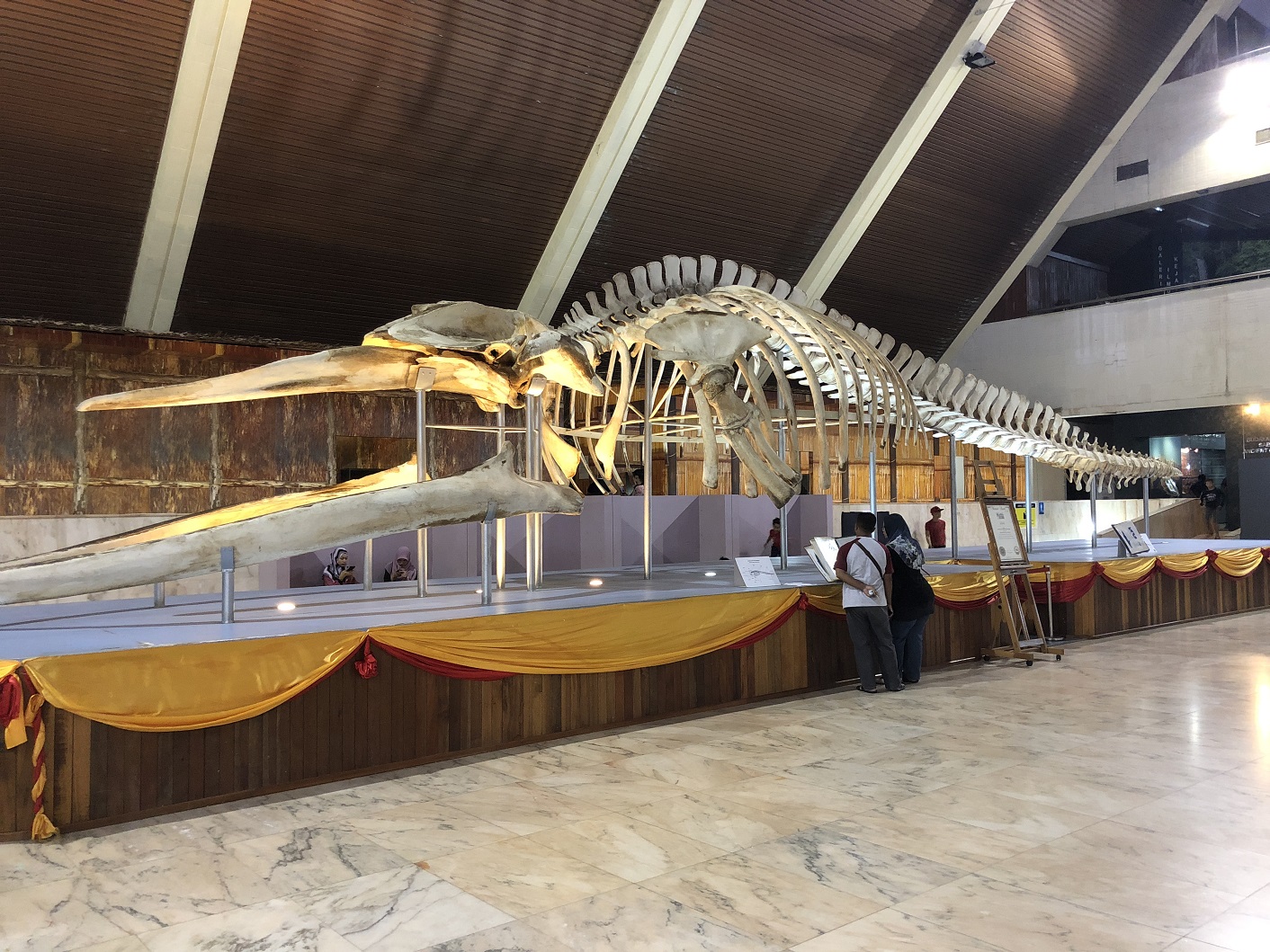Top 20 fun things to enjoy in Kota Kinabalu! (5. Visit the Sabah State Museum)
Top 20 fun things to enjoy in Kota Kinabalu! (5. Visit the Sabah State Museum)
How to get to the Sabah State Museum
The Sabah State Museum is just a ten minute car ride from Kota Kinabalu’s city centre and is located on a hill in a quiet part of the city known as Bukit Istana Lama or ‘Old Palace Hill’. The origins of the Sabah Museum date back to 1965, just after independence with the current site opening in 1984 and it’s a great place to learn lots about Sabah’s peoples , rich diverse culture and traditions as well its interesting and fascinating history from colonial times through to modern Malaysia.
Upon arrival at the museum, the first thing to take your eye is the striking architecture of the main building with the design modeled on a traditional Rungus (local people) longhouse. After purchasing a RM15 ticket it’s time to explore the main museum building that’s divided into standalone themed exhibitions but first you cannot fail to notice the massive skeleton on display.
Bryde’s Whale Skeleton
Bryde’s Whale Skeleton
This skeleton is truly massive at 18.6 metres long. It’s a sad story but the whale was found stranded but still alive in shallow water by fishermen near Gaya Island in 2006. The whale was successfully moved to deeper water but later returned to the spot where it had been stranded and was subsequently found dead. A decision was made to conserve the skeleton and the scale and enormity of this gentle and beautiful animal can be seen in the museum.
Budaya Kita (Our Culture)
Budaya Kita (Our Culture) celebrates the local culture of the 32 peoples in Sabah including the main five tribes Kadazan, Rungus, Murut, Lundayeh and Bajau. On display are musical instruments, basketry, textiles and costumes including a striking Bajau horseman with both the horseman and his horse wearing colourful ceremonial dress.
Head-Hunting
Head-hunting was rife until the administration of the area by the British North Borneo Chartered Company in the late 19th Century however the practice did survive in isolated areas until the 1960s.. Head-hunting was not about cannibalism, rather a means of settling blood feuds between villages and as a display of manhood to win a bride. Passed down generation to generation as heirlooms, it was believed that keeping a collection of skulls would bring good fortune to the family, and skulls preserved as part of the community would protect the village from epidemics and bad spirits.
Sabah Ancient Culture
The focus of this exhibition includes archaeological research undertaken including Madai Caves, an extensive limestone formation near Tawau on the east coast of Sabah that were occupied by cave dwellers 10,000 years ago.
History Gallery
For anyone interested in history this gallery offers a fascinating insight into Sabah’s history. First there are stories of pirates and Portuguese sailors visiting Borneo in the 16th century. Then, the lease and rule of what became North Borneo under the rule of the British Standard Chartered Company from 1881 until Japanese occupation from 1942-1945 in WWII to include the resultant resistance movements, first to British rule, then to Japanese rule during the occupation. Following the Japanese surrender in 1945 North Borneo became a British Colony from 1946 until independence in 1963 and moves to the present chronicling the modern-day progress of Sabah as one of Malaysia’s 13 states.
Heritage Village
Slightly away from the main building is the ‘Heritage Village’ – it’s well worth a look and contains a number of locally crafted traditional buildings including a Murut Longhouse.
Locomotive Gallery
Traces the history of the railway from construction in late 1890s. It was the vision of William Clark Cowie and he believed the railway “Would access the rich resources of the interior”. The railway upon completion did enable commodities including rubber to be moved by rail to the port in Jesselton (former name for Kota Kinabalu) and transportation by sea to England and beyond.
In addition to an old locomotive and carriage nearby a small selection of some old post-war British cars bring back some nostalgic memories to your blogger of cars to be seen whilst growing up in England in the 1960s.
Sabah State Museum Opening Times
The museum is open daily from 9 a.m. to 5 p.m. The size and scale of some museums in the west can leave the visitor feeling overwhelmed, but the Sabah Museum is just the right size. Highly recommended.
Top Tip for Visitors:
Remember to take your camera – there’s no camera fee.
A good option for a rainy morning / afternoon as the vast majority of exhibits are under cover.
Blue Kinabalu Travel Agency include the Sabah Museum on our Kota Kinabalu City Tours
About Martin
Martin is a British expat living in Kota Kinabalu who arranges tailored tours within Sabah primarily for British and Western tourists on behalf of Blue Kinabalu Travel Agency. Please help spread the word about beautiful Sabah and share this post using the social share buttons below.












